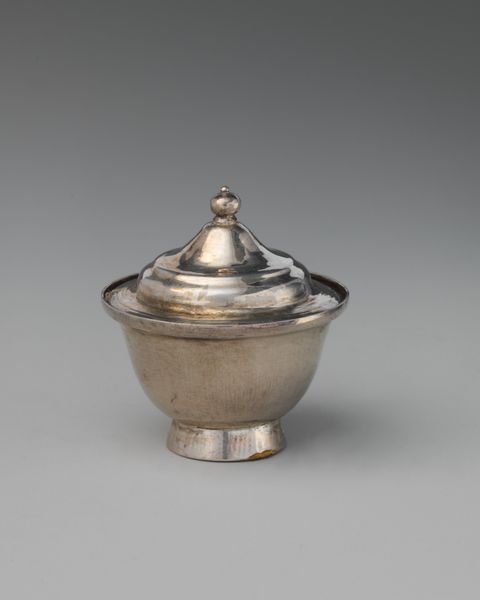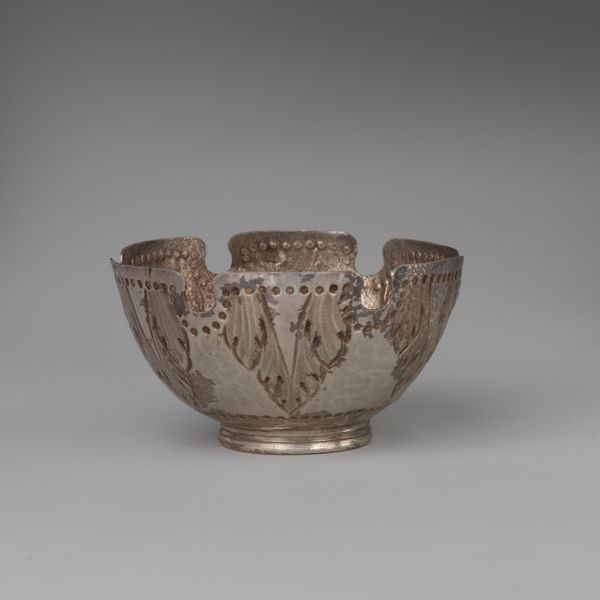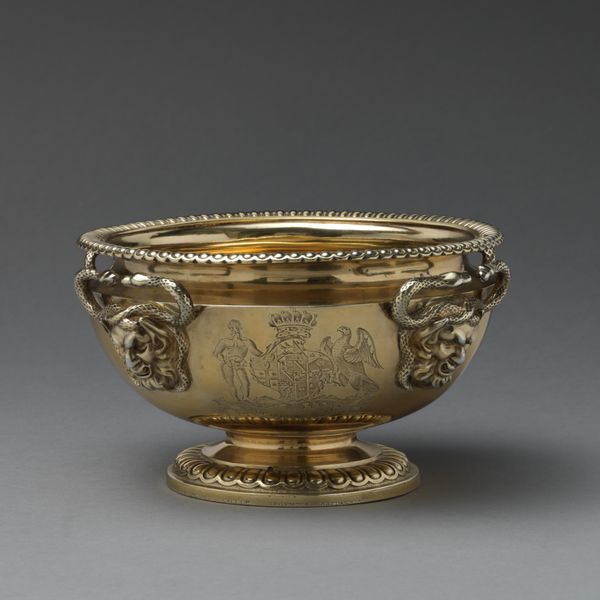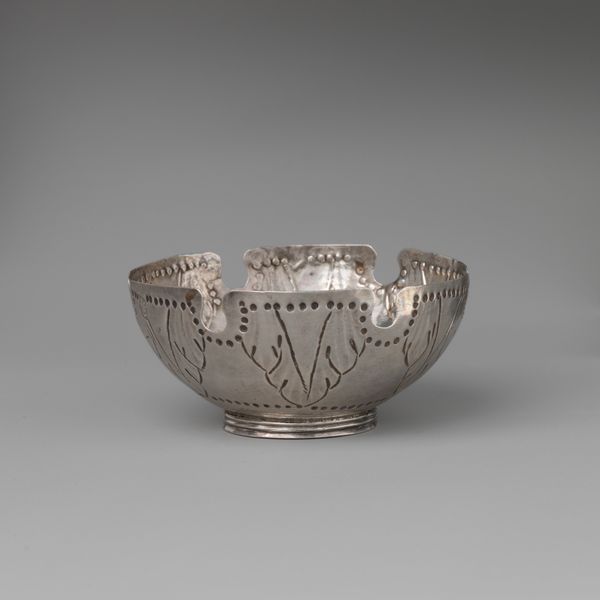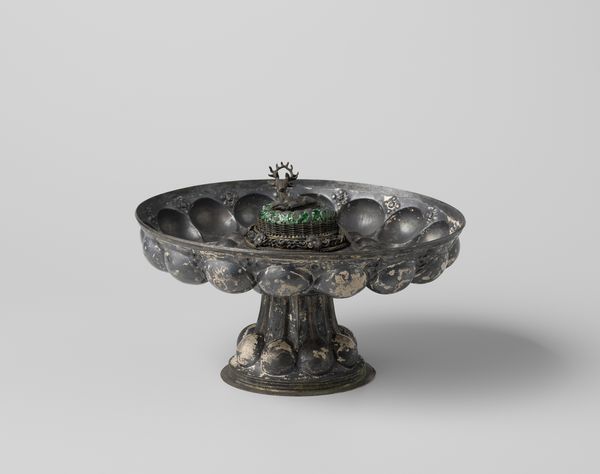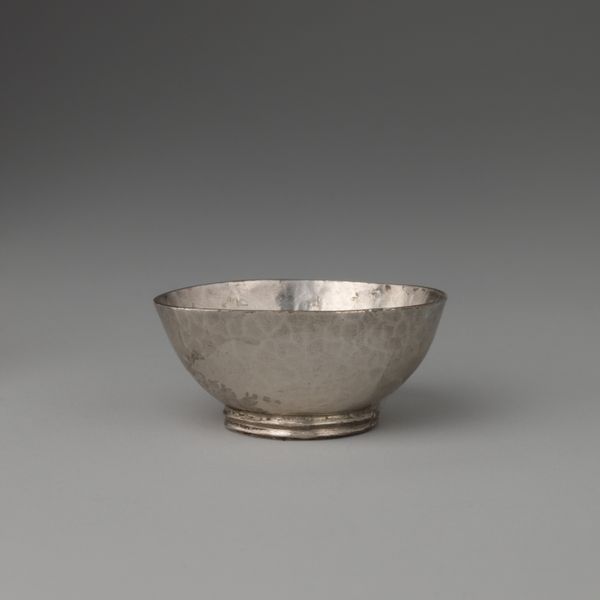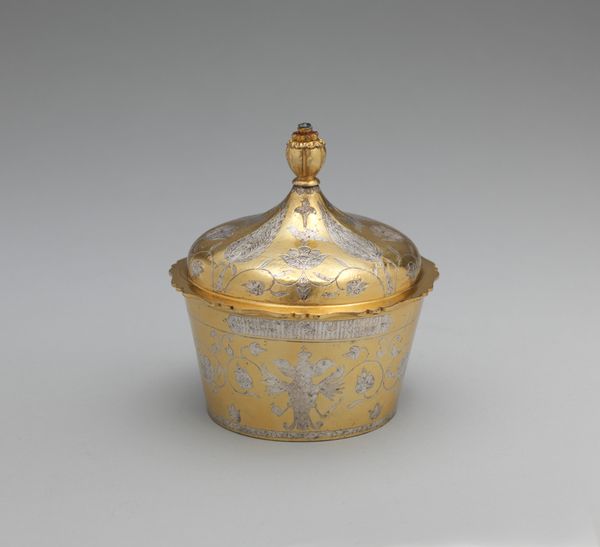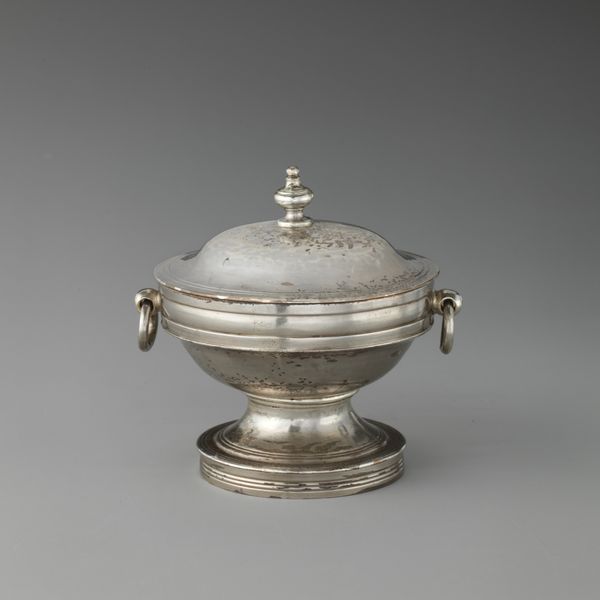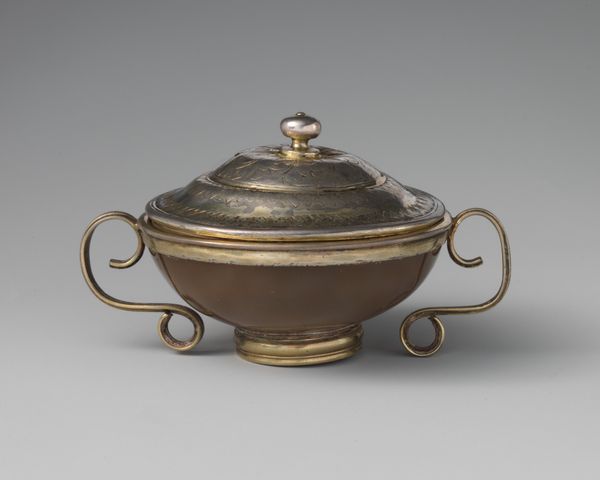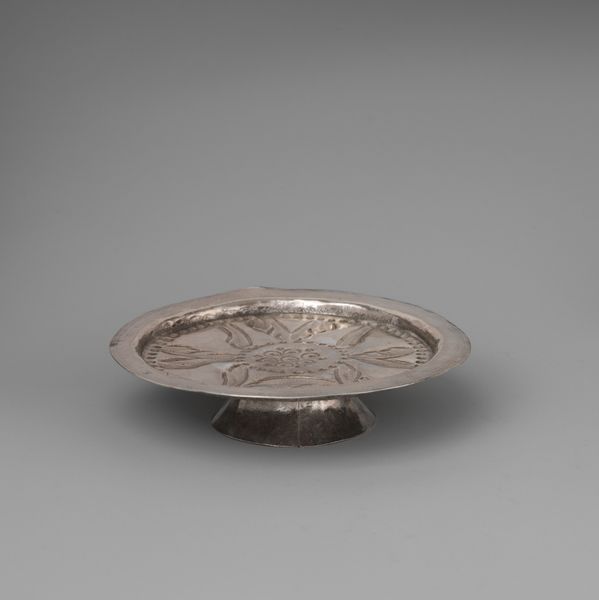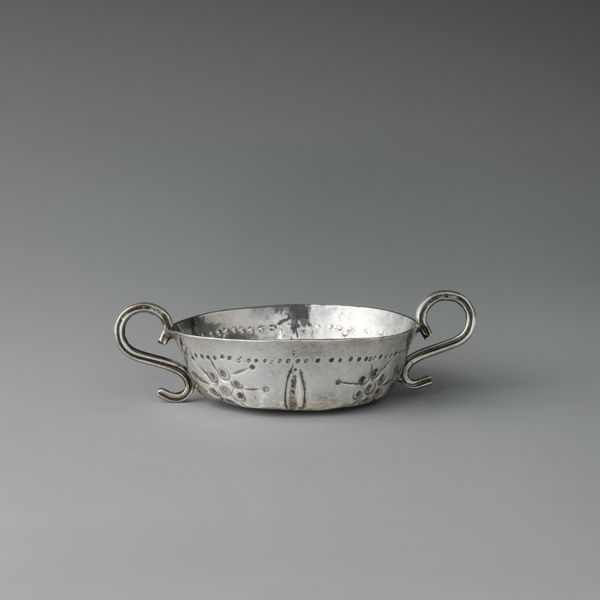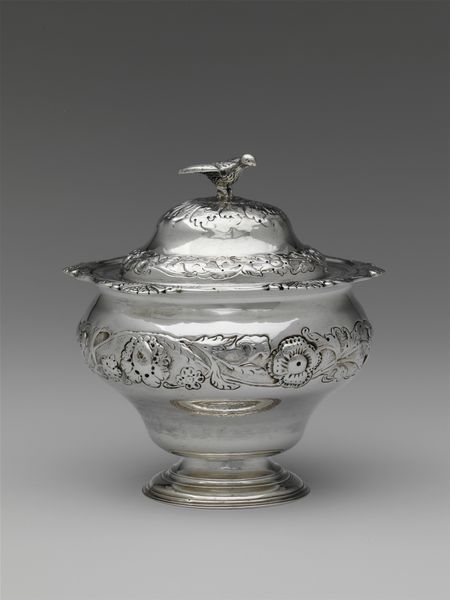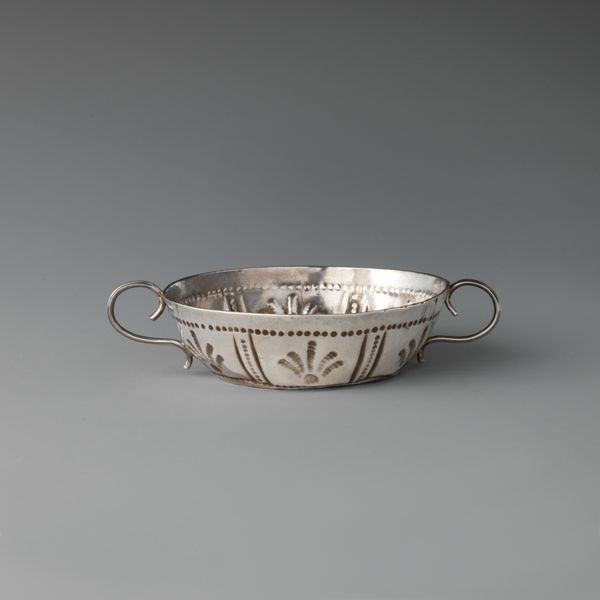
silver, metal, sculpture
#
silver
#
baroque
#
metal
#
sculpture
#
decorative-art
Dimensions: Overall: 11/16 × 1 in. (1.7 × 2.5 cm)
Copyright: Public Domain
Editor: We're looking at a 'Miniature bowl with cover,' crafted between 1685 and 1715. It’s made of silver and currently resides at the Metropolitan Museum of Art. The craftsmanship is quite beautiful! The fluted design on the lid is simple, yet elegant, and its miniature form lends it a precious quality. How do you see this work through a Formalist lens? Curator: What strikes me immediately is the proportional relationship between the bowl and its cover. Note the carefully calibrated curves, echoed in both the bowl and the lid; they provide an exceptional visual unity. Also, observe the reflective properties of the silver, how light is captured and distributed across its surface, modulating the form and drawing the eye. Consider, too, the way the Baroque aesthetic manifests here – the restrained yet undeniable emphasis on ornamentation. Do you perceive that? Editor: Yes, I see that now! The ornamentation is not excessive, but purposeful. What does that suggest in terms of structure? Curator: Exactly! This ornamentation highlights the inherent structure; the ridges on the lid and bowl serve to accentuate its form. The visual tension derives from the balance between smooth and textured surfaces, and that very dialogue engages our perceptual system in deciphering its essence. Every formal choice plays a crucial role in understanding the aesthetic impact. Editor: It’s like the structure reveals itself through the textures! It's far more sophisticated than just a pretty little bowl. I appreciate seeing how the structure carries and reveals so much in it! Curator: Indeed! Through our visual parsing, we begin to appreciate not only the creator’s skill but also a language of form expressed through metalwork.
Comments
No comments
Be the first to comment and join the conversation on the ultimate creative platform.
